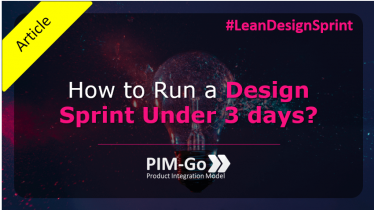Why Product (and not Project)?
PIM-Go is the acronym for Product Integration Model.
But why Product and not Project?
This was one of the most interesting discussions we had when creating PIM-Go.
But first, let’s revisit some definitions.
Project is defined in PMBOK as a “temporary endeavor undertaken to create a unique product, service, or result”.
On the other hand, product is considered something to be offered to the market to solve a problem or to fulfil a need.
Therefore, the first difference between project and product is time.
“Project is temporary, product has a more permanent life cycle”.
But other, not so direct, is the focus of traditional project management in execution efficiency, especially in areas such as pre-defined scope, time and cost. Take for example the metrics commonly used by PMO’s, mostly related to execution as planned.
Differently, those who work with products, generally direct their energy to solve a user problem, or simply to create value. Even when the initiative is filled with changes that affect scope, time and cost.
“Project emphasizes execution, product focuses on value creation”.
. . .
So, which one is better?
Well, it depends (the best answer for any complex question…).
If the initiative is almost 100% predictable, without unexpected changes, and the team know exactly how to deliver, so there is nothing better than focusing on execution.
However, this environment is becoming rare today. Companies are constantly seeking innovation in a competitive world known as VUCA (Volatile, Uncertain, Complex e Ambiguous).
Take for example the automotive industry.
Building a car could be considered a known and predictable process, much more than the software industry, right?
Not for Tesla.
Tesla’s market value in January 2020 overcame Volkswagen’s and now is bigger than Ford and GM together. And as seen in a recent Harvard Business Review article, “How Tesla Sets Itself Apart”, one of Tesla’s unique values is to build cars as software. And this approach is directly related to a product-mindset focused on value creation and customer satisfaction, the most fundamental principle of the Agile Manifesto.
. . .
Back to the discussion in PIM-Go
In PIM-Go, we chose to work with the concept of product. Exactly to emphasize the importance of fulfilling the user need, which is always a moving target. And for this reason, PIM is the acronym for Product Integration Model.
Should this mean that teams never work in temporary initiatives or that they should not seek execution efficiency?
Not at all.
So, would this mean that project is a wrong concept to use?
Of course not.
But it recognizes that successful projects in regard to efficiency (delivery according to the planned scope, time and cost) can also fail miserably in terms of value creation.
It means that the change management in PIM-Go was built to be light and simple, to quickly address what happens in the real world.
And that the role of the project manager in a hybrid environment is now more complex. On one side, the traditional project management skills required to build, for instance, a WBS is still valuable. On the other, it should be complemented by a deeper knowledge of the business domain, making it possible for the project manager to take ownership of business decisions, as a Product Owner does in Scrum.
In PIM-Go models we intensively use Product and Initiative, not to forget that projects exist, but to encourage the value-mindset, not only efficiency.
Based on these discussions, two PIM-Go models were created:
- PIM-Go Agile, directed to complex environments with a high level of uncertainty; and
- PIM-Go Hybrid, to more predictive contexts.
Both supported with canvas and templates that can be freely used.
So, if in your company Product and Project are used indistinctly, this may be an opportunity for a rich discussion. And whatever is the result, we may all be one step closer to solutions that actually bring value to our users and customers.
Wish you great deliveries.
Alvaro Junqueira e Igor Lagreca (PIM-Go co-authors)


